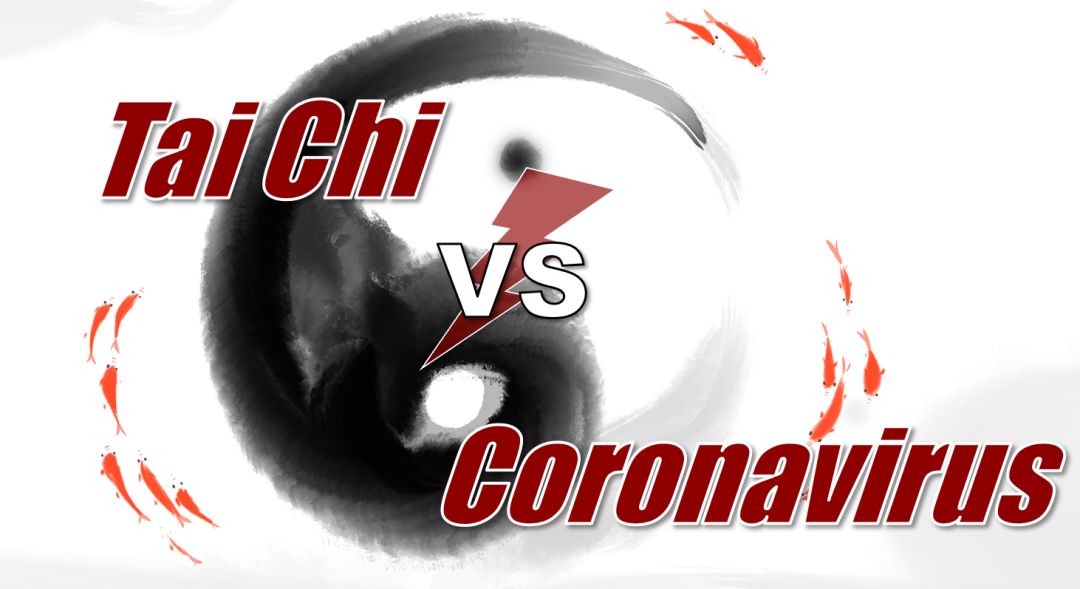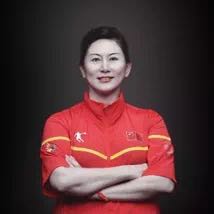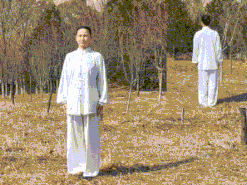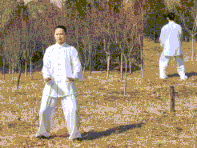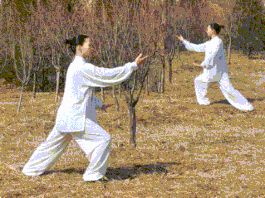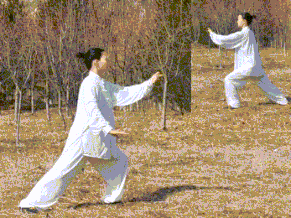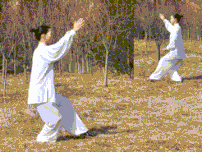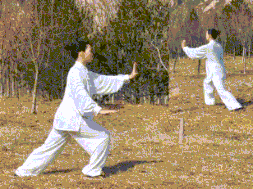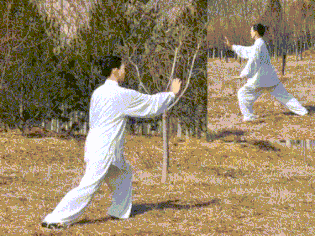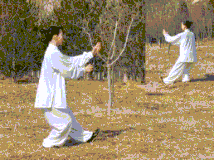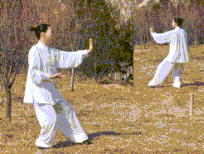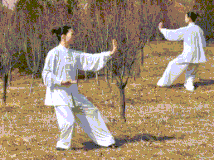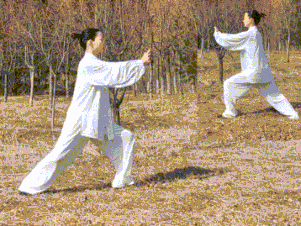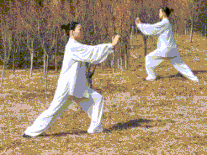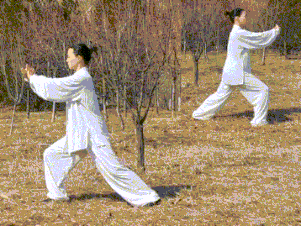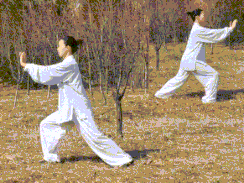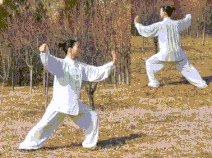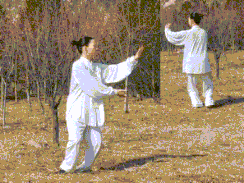Warm up and learn 24-Form Tai Chi at home from PKU!
Mar 19, 2020
Peking University, March 19, 2020: To control the spread of the novel coronavirus, most students have been stuck indoors for over a month now. To help keep people active, we have an online workout tutorial featuring traditional Chinese martial arts from the PKU Department of PE!
This tutorial was launched by the team of Professor Zhang Rui, secretary general of Chinese University Cycling Association and executive director of PKU Sports Industry Research Base Under General Administration of Sport of China, and taught by Lecturer Feng Kaijie.
Lecturer Feng Kaijie, champion of the 11th National Games of the PRC, has prepared detailed demonstrations of the first 12 forms that make up 24-Form Tai Chi. Let's start our training with Lecturer Feng right away!
Professor Zhang Rui
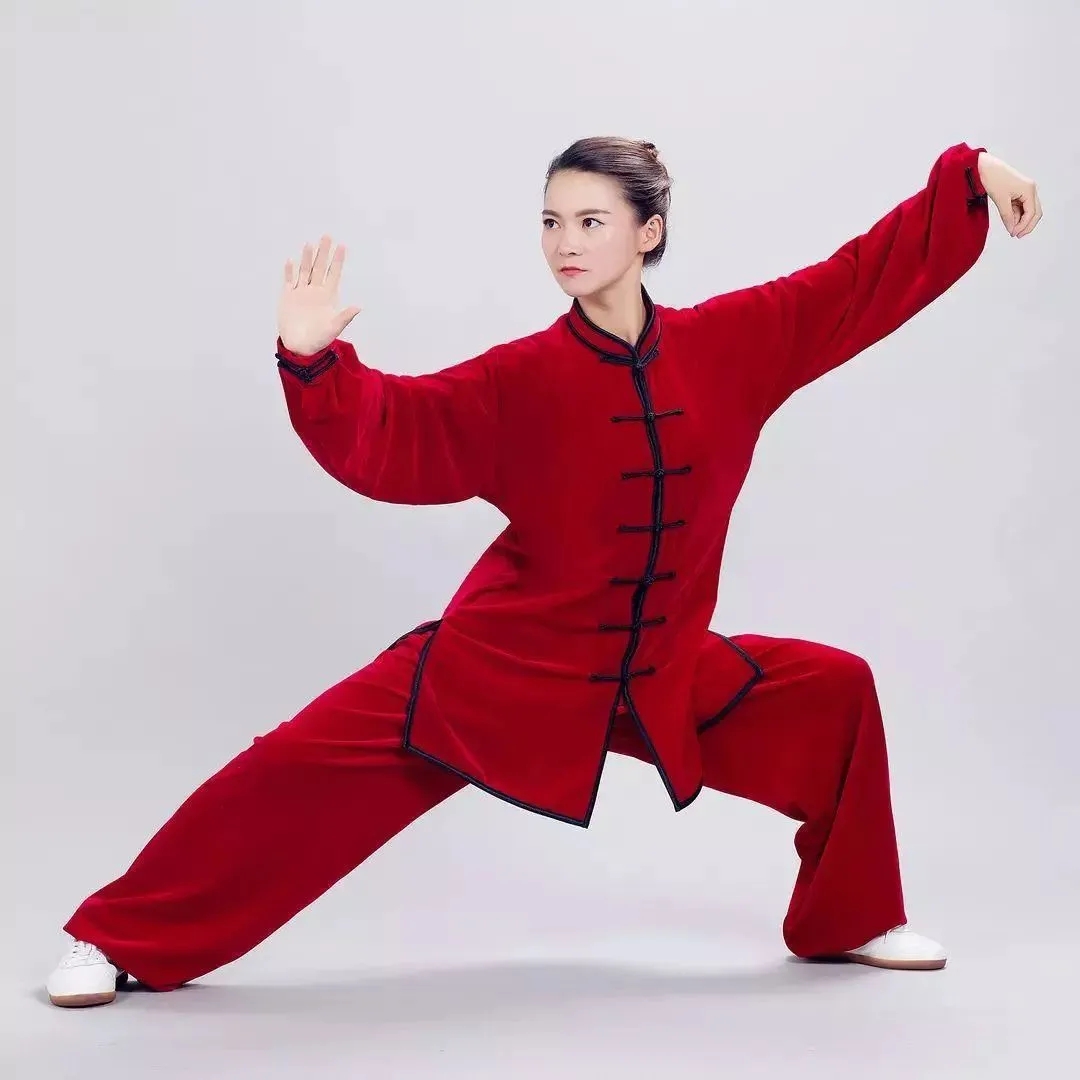
Lecturer Feng Kaijie
No.1: Qishi (Commencing Form)
Well begun is half won. To do a proper Qishi, you need to relax your shoulders, hold both chest and stomach in, tighten the bottom, and straighten the back. While you memorize this feeling, you can part your feet and slightly squat down with two arms stretching forwards, palms facing the ground. Please try to control your breath and relax your muscles during this process.
No.2: Zuo You Yema Fenzong (Left and Right Wild Horse Splits Mane)
The next movement is a combination of twisting the upper body and shifting your weight to the other foot. As the name suggests, it has two variations according to which direction you move. If you want to stretch your right leg first, you should simultaneously turn your body towards the left. Then, curl your arms as if holding an invisible basketball while pulling your foot back. Twist your upper body again and shift your weight to the other foot. At length, your lower part forms a proper lunge and meanwhile the two arms are stretched into a straight line. You can continue to practice the Left Wild Horse Splits Mane starting from stretching your left leg and repeating the rest of the steps.
No.3: Baihe Liangchi (White Crane Spreads Its Wings)
This movement can be divided into three parts: First, bend your arms like holding an invisible ball and slightly close the distance between your feet. Second, shift your weight from the foot in the front to the back one, holding your upper body straight and steady. Third, move your right hand past your face, palm turned out, while your left hand makes an arc past your waist and up to the shoulders, with the palm tilted down – the pose looks just like a white crane spreading the wings.
No.4: Zuo You Louxi Aobu (Left and Right Knee Brushing)
To accomplish this set of movements, you need to firstly shift your weight onto your left foot and turn your body to the right, while turning the toes of your left foot in. As for the upper limbs, you should make an arc with your left hand at the same time. Then, turn to the left, shifting your weight onto your right foot, with pushing your right hand forward. Likewise, you can do this movement starting from a different direction.
No.5: Shou Hui Pipa (Hand Strumming the Lute)
The key pose of this movement is to mimic strumming a lute with your hands. First, bring your right foot to the side of your left foot, so that your feet are in a parallel stance. Then, shift your weight to the leg behind as if sitting on it. Meanwhile, your right hand makes an arc past your abdomen and then up to your left shoulder, and your left hand stretches with a little arc as well, just like holding a lute.
No.6: Zuo You Daojuangong (Reverse Roll Forearm)
This set of movements also has two variations, each from a different direction. However, the major three tips work well with both movements. First, twist your waist and pull the hands back. Second, take a step backward while turning your palms down. Third, shift your weight to your rear leg and push your palms out.
No.7: Zuo Lanquewei (Left Grasp the Bird's Tail)
The name of this movement should make you picture catching a bird. It starts with turning your upper body around and pulling your hands back. Then, you draw a foot back while arcing your arms like holding a basketball. You twist the waist again, move a step forward, and do a lunge. After that, you should turn back and spread your arms, while shifting your weight to the leg behind. Turn around and lunge forward. Later, you can shift your weight back to the rear leg and do a lunge with spread arms.
No.8: You Lanquewei (Right Grasp the Bird's Tail)
This movement is basically the same as the above one. The only difference is that it starts with turning the upper body around while parting your hands, instead of pulling them back.
No.9: Danbian (Single Whip)
This movement requires you to hook your hands and curve your arms while turning your body first to the left and then to the right. For the upper limbs, your left palm turns up and makes an arc across your body until it is in front of your right shoulder, tilted in. When you make a lunge later, you push out this palm.
No.10: Yunshou (Cloud Hands)
Yunshou is a defensive position. People should part their legs first. Then, while shifting their weight from one foot to the other, alternate pushing out your slightly bent arms. Repeat this movement three times.
No.11: Danbian (Single Whip)
Repeat this form as previously described in No. 9.
No.12: Gaotanma (High Pat on Horse)
The last movement can also be broken up into three parts. First, close the distance between the feet. Second, turn to the left and bend your right knee, stretching your left leg, while turning your palms upwards. Third, shift your weight to the rear leg and push your palms out.
These are the first 12 movements in 24-Form Tai Chi. If you want visual guidance, check out the wonderful videos by clicking the following links!
Demo of the first 12 movements in 24-Form Tai Chi (Front)
https://v.qq.com/x/page/p0930s15mzs.html
Demo of the first 12 movements in 24-Form Tai Chi (Back)
https://v.qq.com/x/page/n0930gamhga.html
We hope that every student can keep fit while staying at home and we can reunite on the PKU campus as soon as possible.
Written by: Wang Nini
Edited by: Amanda Hu, Trevor
Photo credit to: PKU Department of PE, VCG
Video credit to: PKU Department of PE
Source: PKU Department of PE
